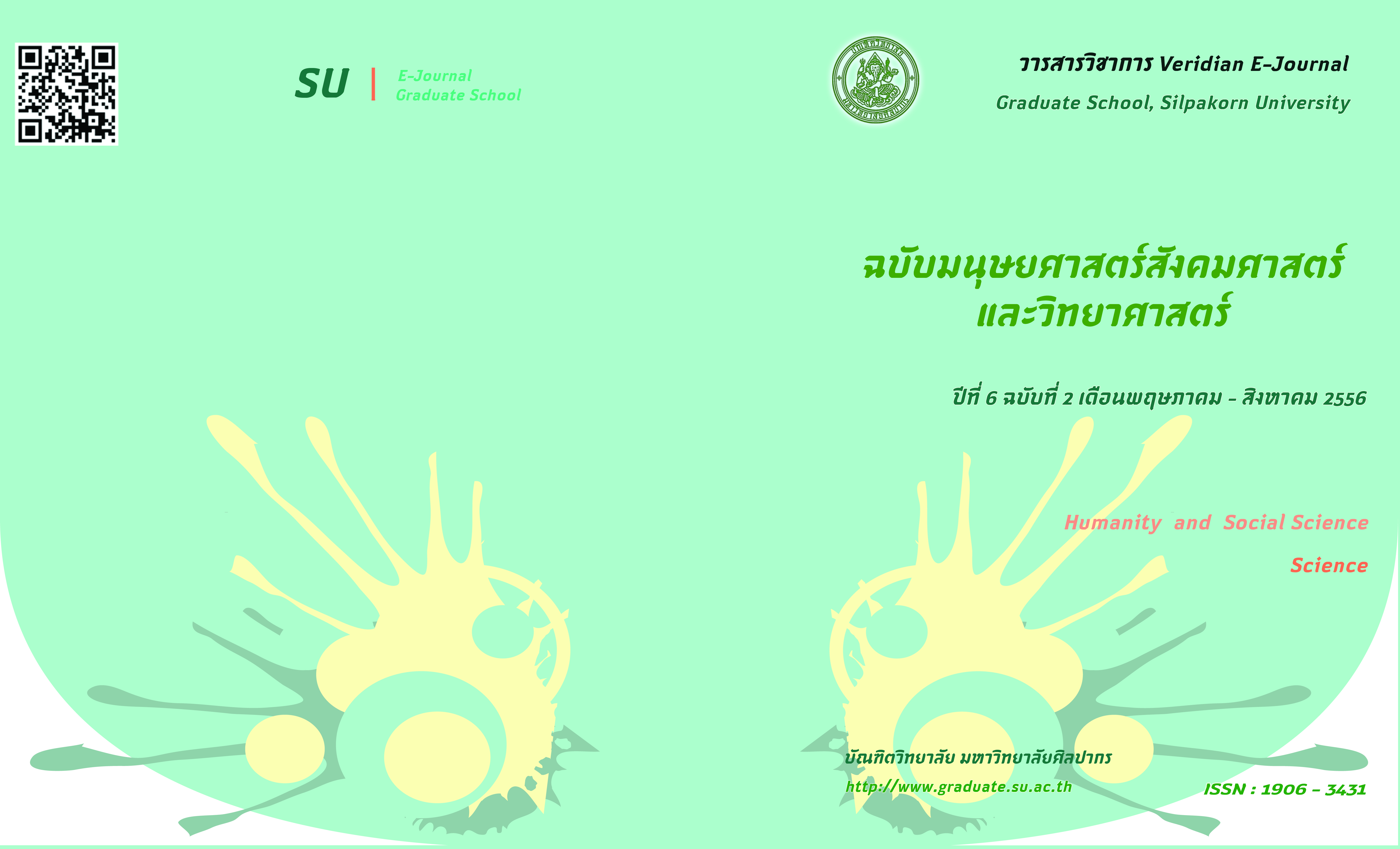การหาปริมาณไนไตรท์และไนเตรทบนเส้นผมของผู้ยิงปืนโดยเทคนิคไอออนโครมาโทกราฟี
Main Article Content
Abstract
บทคัดย่อ
วัตถุประสงค์ของงานวิจัยนี้ศึกษาปริมาณไนไตรท์ (NO2-) และไนเตรท (NO3-) จากเขม่าปืนบนเส้นผมของผู้ยิงปืน โดยใช้เทคนิคไอออนโคมาโทรกราฟี ผู้วิจัยใช้อาวุธปืน 2 ชนิดในการทดลองเนื่องจากพบว่าใช้บ่อยในการก่ออาชญากรรม คือปืนพกรีวอลเวอร์ ยี่ห้อ Smith&Wesson ขนาด .38 Special กับกระสุนปืน ยี่ห้อ Royal Ammuntion 158 gr. และปืนกึ่งอัตโนมัติยี่ห้อ Glock ขนาด 9 มม. กับกระสุนปืนยี่ห้อ Bullet Master 124 gr. ในการทดลองยิงครั้งละ 3 นัด เก็บเขม่าที่ระยะเวลาภายหลังยิงปืนทันที, 6,12 และ 24 ชั่วโมง โดยเก็บพื้นที่เส้นผมทั้งหมด 6 บริเวณ คือ บริเวณด้านหน้าขวา, ข้างขวา, กลางกระหม่อมขวา, ด้านหน้าซ้าย,ข้างซ้าย และกลางกระหม่อมซ้าย
จากผลการทดลองโดยเตรียมสารละลายมาตรฐานไนไตรท์และไนเตรทที่ความเข้มข้น 1-10 ppm. ได้กราฟเป็นเส้นตรง ด้วยค่า (R2) = 0.996 ทั้งสองไอออน เมื่อเก็บตัวอย่างเส้นผมของผู้ยิงอาวุธปืนรีวอลเวอร์และกึ่งอัตโนมัติมาวิเคราะห์ พบว่า ปริมาณไนไตรท์ที่พบมากที่สุด คือ บริเวณด้านหน้าซ้ายกับด้านหน้าขวา และพบน้อยที่สุดบริเวณกลางกระหม่อม ปริมาณไนไตรท์และไนเตรท ที่พบในเส้นผมที่เก็บจากด้านขวาและด้านซ้ายของผู้ยิงอาวุธปืนรีวอลเวอร์จะมีปริมาณใกล้เคียงกัน แต่ในอาวุธปืนกึ่งอัตโนมัติบริเวณด้านขวาจะพบมากกว่าด้านซ้าย และเมื่อระยะเวลาเพิ่มขึ้นปริมาณไนไตรท์และไนเตรทจะลดลง แต่ก็สามารถตรวจพบได้แม้เวลาผ่านไป 24 ชั่วโมง ผลจากการศึกษานี้จึงเป็นประโยชน์ในทางนิติวิทยาศาสตร์สำหรับการบ่งชี้ว่ามีการยิงปืนหรือไม่ และวิธีการที่พัฒนาขึ้นในครั้งนี้อาจนำไปใช้ยืนยันบุคคลที่อยู่ใกล้เหตุการณ์การใช้อาวุธปืนได้
Abstract
The objective of this study is to determine nitrites and nitrates contents in gunshot residues (GSR) deposited on the hair of the shooter by using the technique of Ion Chromatography (IC). The weapons chosen for this study were the most frequently used firearms in crimes namely, a revolver Smith&Wesson, .38 Royal Ammunition and a semiautomatic Glock, .9 mm Bullet Master. In each experiment, three bullets were fired successively. The GSR samples were taken from the hair of the shooter immediately and after 6,12 and 24 hours after shooting. The samples were taken from the hairs on 6 different areas of the shooter's head namely the right front, the right side, the right top, the left front, the left side and the left top of the head.
The linear calibration curves for the two ions were obtained at a concentration range of 1-10 ppm with R2 = 0.996 for both ions and the calibration equations were used to estimate the amounts of the two ions in GSR samples. For both guns, the highest amounts of the two ions were found in the samples collected from the hairs on the two sides of the head whereas the lowest NO3- and NO2- contents were found in the samples taken from the top of the head. For the revolver experiments, the amounts of the two ions detected in samples collected from both sides of the head were nearly equivalent but in the semiautomatic cases, the largest amounts of the two ions were found in samples taken from the right side of the head. As the samples collection time was increased, the NO3- and NO2- contents in all samples decreased. However, the two ions can be detected in all samples collected 24 hours after shooting. The results from this study have shown to be very useful in the investigation of firearm usages and the method developed in this work may be used to identify a person in the vicinity of gun firing.
